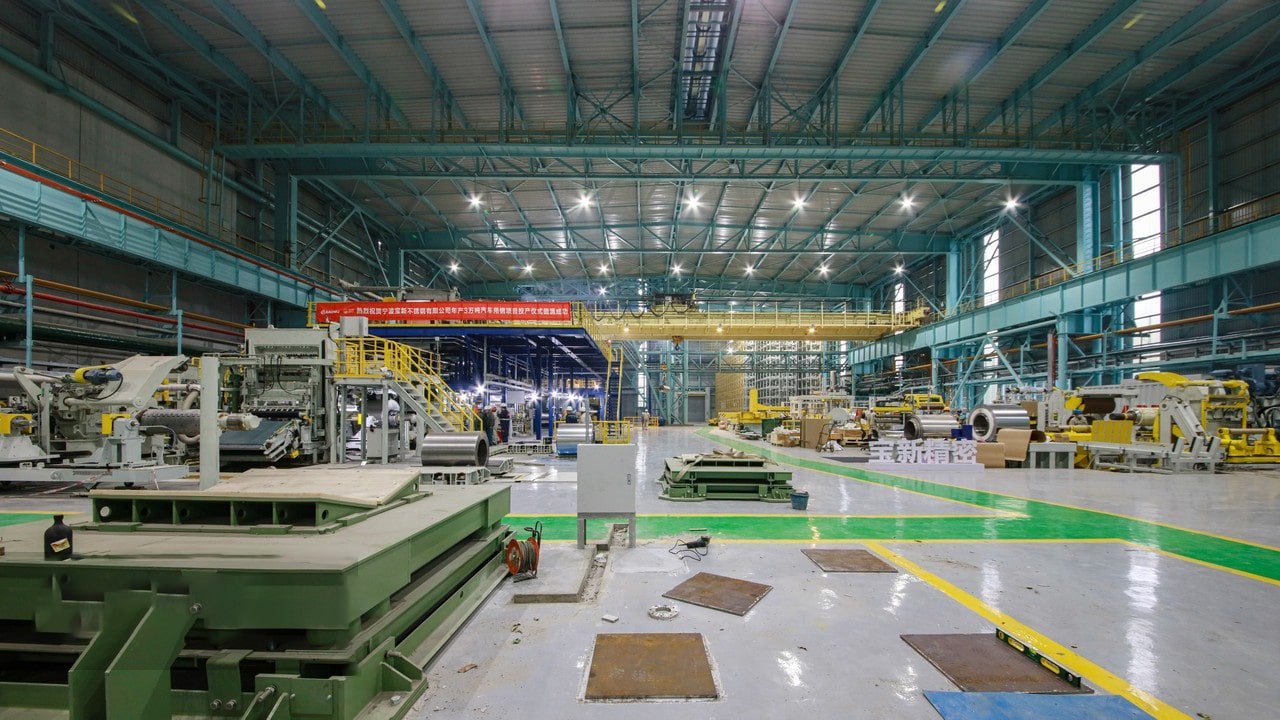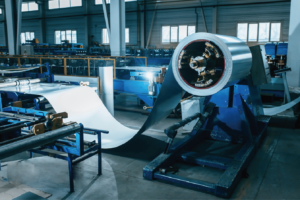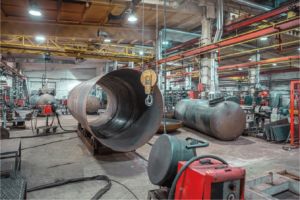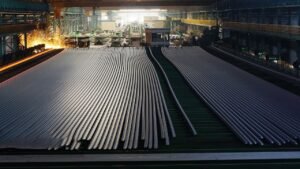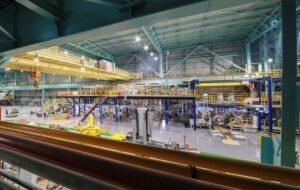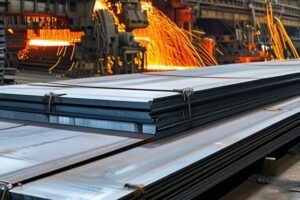Каковы варианты толщины труб из нержавеющей стали?

In my 15 years of manufacturing stainless steel pipes, I've learned that pipe thickness selection is critical for performance and safety. Improper thickness selection can lead to premature failure, while optimal thickness ensures long-term reliability.
Stainless steel pipe thickness options are standardized according to schedule numbers1 (5S through 160), ranging from approximately 1mm to 25mm, with selection based on pressure requirements, corrosion allowance, and mechanical loads.
Through extensive experience with global projects, I've gained deep insights into thickness selection criteria. Let me share how proper thickness selection can prevent failures and optimize system performance.
The selection of appropriate pipe thickness impacts everything from pressure handling capability to service life. Having supplied pipes for diverse applications, I understand how thickness specifications affect both performance and cost.
How is the Wall Thickness of Stainless Steel Pipes Determined?
Drawing from years of engineering experience, I can confirm that wall thickness determination involves multiple critical factors.
Wall thickness for stainless steel pipes is determined through engineering calculations considering design pressure, temperature, mechanical loads, corrosion allowance, and safety factors according to applicable codes like ASME B31.32.

Design Pressure Considerations
-
Pressure Rating Calculations:
- Internal pressure requirements
- External pressure effects
- Surge conditions
- Safety factors
-
Температурные эффекты:
- Material strength at temperature
- Thermal stress considerations
- Expansion/contraction allowances
| Температура (°C) | Strength Reduction Factor | Minimum Thickness Addition |
|---|---|---|
| Up to 50 | 1.00 | Нет |
| 51-100 | 0.95 | 0,2 мм |
| 101-150 | 0.90 | 0.4mm |
Mechanical Load Analysis
-
External Forces:
- Dead weight loads
- Live loads
- Wind loads
- Seismic considerations
-
Support Spacing:
- Maximum span calculations
- Deflection limits
- Support requirements
- Vibration considerations
Corrosion Considerations
-
Environmental Factors:
- Media corrosiveness
- External environment
- Temperature effects
- Flow conditions
-
Service Life Requirements:
- Design life expectations
- Inspection intervals
- Maintenance planning
- Replacement criteria
What Standard Thicknesses Are Available for Stainless Steel Pipes?
Based on manufacturing experience, I understand the importance of standardized thickness options.
Standard pipe thicknesses are defined by schedule numbers3 ranging from 5S to 160, with common schedules including 10S, 40S, and 80S for stainless steel pipes.

Standard Schedule Options
- Light Wall Schedules:
- Schedule 5S
- Schedule 10S
- Schedule 20S
- Common applications
| Schedule | Диапазон толщины (мм) | Типовые применения |
|---|---|---|
| 5S | 1.0 - 2.8 | Low pressure systems |
| 10S | 1.2 - 3.4 | General service |
| 40S | 2.8 - 12.7 | High pressure service |
Manufacturing Capabilities
-
Production Limits:
- Minimum thickness capabilities
- Maximum thickness capabilities
- Tolerance control
- Quality assurance
-
Special Requirements:
- Custom thickness options
- Enhanced tolerances
- Special finishes
- Требования к тестированию
How Does Pipe Thickness Affect the Performance of Stainless Steel Pipes?
Through years of field experience, I've observed how thickness directly impacts pipe performance.
Pipe thickness affects pressure handling capability, mechanical strength, corrosion resistance, and service life. Thicker walls provide greater pressure capacity and corrosion allowance but increase weight and cost.

Pressure Performance
-
Internal Pressure Capacity:
- Maximum allowable working pressure
- Burst pressure ratings
- Safety factors
- Code compliance
-
External Pressure Resistance:
- Vacuum service capability
- Collapse resistance
- Underground installation
- Marine applications
| Толщина стенок | Номинальное давление | Коэффициент безопасности |
|---|---|---|
| Schedule 10S | Up to 50 bar | 3.0 |
| Schedule 40S | Up to 150 bar | 3.5 |
| Schedule 80S | Up to 300 bar | 4.0 |
Механические свойства
-
Structural Strength:
- Load bearing capacity
- Span capabilities
- Impact resistance
- Fatigue performance
-
Installation Considerations:
- Weight implications
- Требования к сварке
- Support needs
- Handling procedures
What Applications Require Thicker or Thinner Stainless Steel Pipes?
My experience across industries has shown how application requirements drive thickness selection.
Different applications require specific wall thicknesses based on service conditions. High-pressure systems typically require thicker walls, while low-pressure applications can use thinner walls for cost efficiency.

High-Pressure Applications
-
Process Requirements:
- Химическая обработка
- High-pressure hydraulics
- Steam systems
- Compressed gas
-
Safety Considerations:
- Risk assessment
- Code compliance
- Требования к тестированию
- Inspection needs
-
Performance Factors:
- Условия эксплуатации
- Service life expectations
- Требования к техническому обслуживанию
- Reliability needs
Low-Pressure Applications
-
System Types:
- Drainage systems
- Ventilation
- Low-pressure process
- Utility services
-
Economic Considerations:
- Material costs
- Installation efficiency
- Maintenance costs
- Lifecycle expenses
-
Design Flexibility:
- Weight reduction
- Space constraints
- Installation ease
- Modification capability
How to Select the Appropriate Thickness for Stainless Steel Pipes in Your Project?
Drawing from extensive project experience, I understand the critical factors in thickness selection.
Proper thickness selection requires comprehensive analysis of operating conditions, code requirements, economic factors, and maintenance considerations.

Engineering Analysis
-
Design Calculations:
- Pressure requirements
- Temperature effects
- Load analysis
- Corrosion allowance
-
Code Compliance:
- ASME standards
- Local regulations
- Industry specifications
- Client requirements
-
Safety Considerations:
- Risk assessment
- Failure analysis
- Emergency scenarios
- Inspection requirements
Economic Evaluation
-
Initial Costs:
- Material expenses
- Fabrication costs
- Installation costs
- Требования к тестированию
-
Lifecycle Analysis:
- Потребности в техническом обслуживании
- Inspection frequency
- Replacement intervals
- Operating costs
-
Performance Benefits:
- Reliability improvements
- Safety margins
- Service life extension
- Operational flexibility
Project-Specific Factors
-
Installation Requirements:
- Site conditions
- Access limitations
- Support structures
- Connection methods
-
Operational Needs:
- Process requirements
- Maintenance access
- Modification potential
- Future expansion
-
Quality Assurance:
- Testing protocols
- Потребности в документации
- Certification requirements
- Inspection criteria
Заключение
Selecting the appropriate thickness for stainless steel pipes requires careful consideration of multiple factors including pressure requirements, mechanical loads, corrosion allowance, and economic considerations. Proper thickness selection ensures optimal performance, safety, and cost-effectiveness throughout the system's lifecycle.
У вас есть вопросы или нужна дополнительная информация?
Свяжитесь с нами, чтобы получить индивидуальную помощь и квалифицированный совет.
